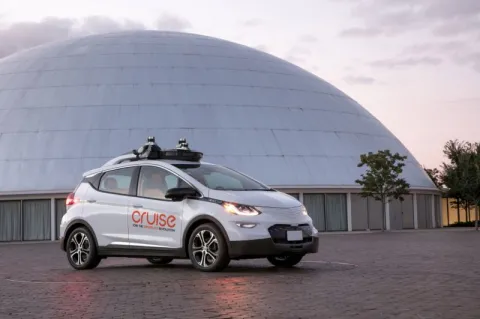How the LIDAR-on-a-Chip Technology GM Just Bought Probably Works

Strobe, a lidar startup that could give the giant automaker a leg up in the race to make self-driving cars a mainstream technology. Kyle Vogt, founder of the self-driving car startup Cruise (which GM acquired last year), announced the acquisition in a Monday blog post.
Lidar — short for light radar — is widely seen as a key sensor technology for self-driving cars. By sending out laser pulses and measuring how long it takes for them to bounce back, lidar builds a detailed 3-D map of a car's surroundings.
Strobe is one of many startups that has been trying to develop re-designed lidars that are cheap and durable enough for mainstream commercial use. Strobe hasn't revealed how its technology works, but we can make an educated guess by looking at the academic research of Strobe board member John Bowers.
Bowers is a professor in the electrical and computer engineering department at the University of California, Santa Barbara, and he has spent years researching how to pack the key elements of a lidar sensor onto a silicon chip. He is the Director of the Institute for Energy Efficiency and a faculty member of the Technology Management Program (TMP).
By Timothy B. Lee

 Instagram
Instagram LinkedIn
LinkedIn Twitter
Twitter